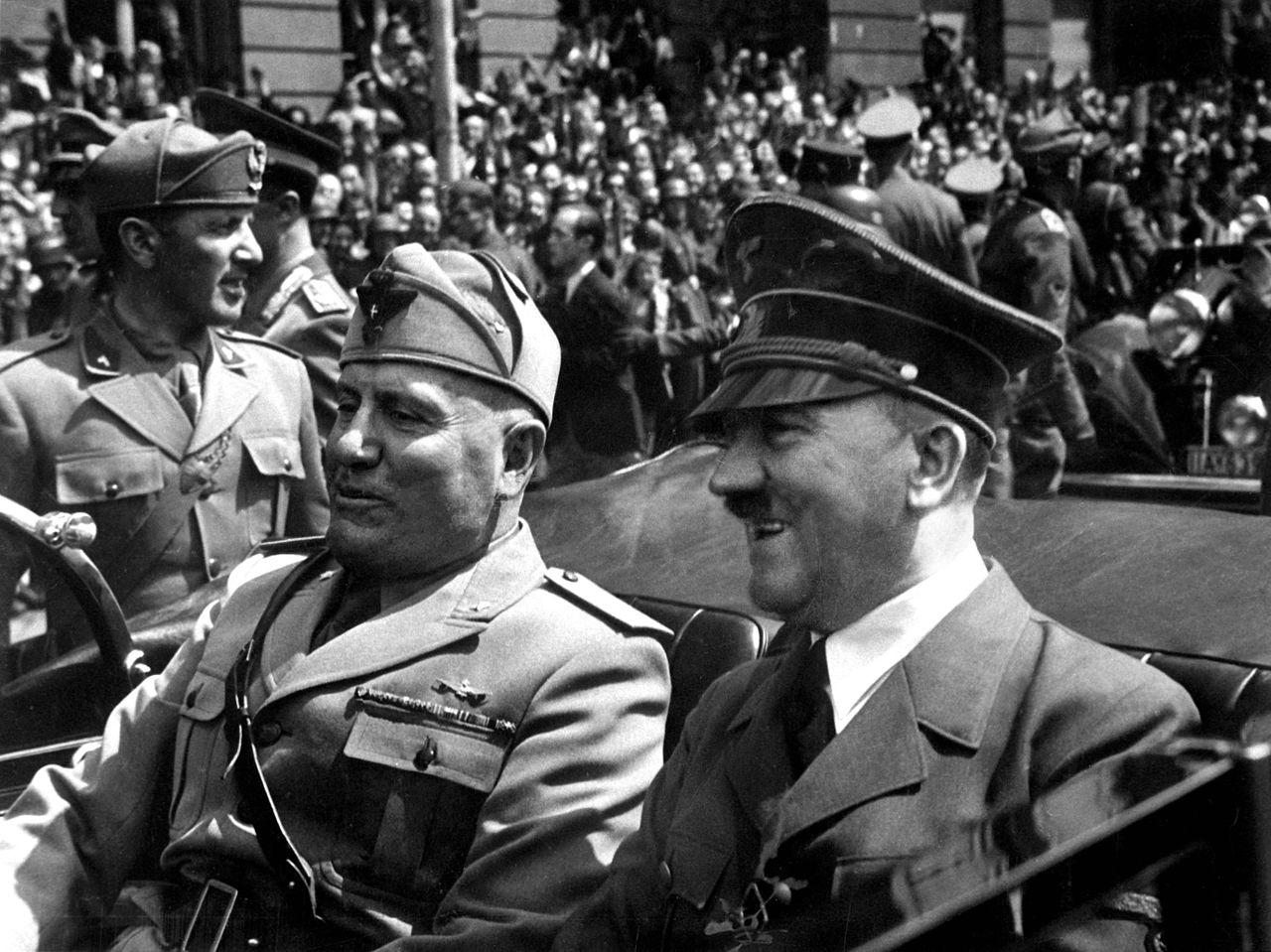” … the streamlined men who think in slogans and talk in bullets” George Orwell, Coming Up for Air
We Americans have an unfortunate penchant for abbreviations. Who else would shorten a two-letter word like “at” to the symbol @? I can type “at” quicker than @; so, at least for me, it is not an efficient symbol. While such foibles can be seen as endearing peccadillos, our simplistic political sloganeering and labeling is misleading and has contributed significantly to the divisions in America and the increasingly violent political action, such as has been seen at Berkeley and murderously at Charlottesville.
The acronym “Antifa” is a case in point. “Antifa” is short for “Anti-Fascist Action.” It comes originally from the German Anti-Faschististe Aktion and referred to the left-wing groups that opposed Italian Fascists and German Nazis in the 1920’s and 30’s. Therefore, to understand what’s wrong with the movement, we must get beyond the egregious failings of our current president–failings that are not endearing peccadillos. It is imperative both to understand the fascism that Antifa purportedly opposes and what Antifa itself actually is.
Fascism
Fascism is a modernist ideology that rose to prominence in the first half of the twentieth century as a political and economic alternative to democracy, capitalism, and to revolutionary socialism, although it was closest to the last–a fact that will shock most people. It came to power in the wake of the cultural, political and economic turmoil of post-World War I European societies, triumphing initially in Benito Mussolini’s Italy and then most infamously in Hitler’s Nazi Germany.[1] While not as coherent an ideology as socialism,[2] fascism can best be understood by focusing on three categories: the mythic, the political, and the economic.[3]
Mythic
Ideologies have an underlying metanarrative or myth that encapsulates their vision of the world. Socialism had appealed to a utopian vision of equality. Mussolini came to the conclusion that socialism’s egalitarian dream was the idealization of an abstraction. He and the fascist movement that he founded appealed to something more fundamental and less rationalistic–the common bonds of the nation or in Hitler’s Nazism to the race or the volk, the people. For both, blood was thicker than thought. Although they too looked to the future, as in Hitler’s thousand-year Reich, they utilized a rhetoric that looked to the past. Italian fascism played upon the patriotic feelings of the Italian people by harking back to the glories of the Roman Empire. The Nazis supported their claims to German greatness by connecting their vision to the Nordic myths.
In spite of their appeal to their subjects’ greatness as a people, the fascists were anti-egalitarian. Criticizing liberal democracy, Mussolini wrote, “Fascism denies, in democracy, the absurd unconventional untruth of political equality.”[4] They looked to a revolutionary vanguard for the elite soldiers of their radical program, as did Lenin and the revolutionary socialists. Yet fascism especially exalted the Nietzschean superman who embodied the myth and led the revolution. Mussolini was “Il Duce” and Hitler was “Der Führer.”[5]
The vision of a nation or race that is destined to rule meshed with the militaristic imperialistic expansionism characteristic of both Italian fascism and German Nazism. In the bleak conditions of 1920’s Germany and Italy, fascist propaganda served up a counterfeit religion that gave to many a sense of purpose for their lives. The pseudo-religious nature of fascism will be a crucial point when we look at the problem of political violence.
Political
Fascism, as did the revolutionary socialism of the Soviet Union, advocated and established a totalitarian state characterized by government control of all aspects of life in which the individual’s existence and destiny were in service to the state and the leader who embodied it. “The Fascist state has drawn into itself even the economic activities of the nation, and, through the corporate social and educational institutions created by it, its influence reaches every aspect of the national life and includes, all the political, economic and spiritual forces of the nation.” [6]
Mussolini proclaimed in a 1928 speech, “All within the state, nothing outside the state, nothing against the state.” The Nazi political slogan “Ein Volk, ein Reich, ein Führer” (“One people, one empire, one leader”) said the same. The radical call for dedication to the state demanded not just obedience from the masses but also their active support. One could not just go about one’s business. The fascists criticized the decadence of Western democracies for their individualism and false view of freedom, which “would end in a condition of society in which a degenerate herd would have no other preoccupation but the satisfaction of the lowest desires of common men.” [7] True freedom was in service to the state or the people; in reality, as also was the case with the Marxist countries, in service to the party.
Economic
It is important to remember that Mussolini was a leading socialist who was even praised at one time by Lenin. He claimed to be establishing a true and more effective socialism. Also, the Nazis were National Socialists. Both wanted to construct the corporate state. In contrast to the socialists, the fascists were not absolutely opposed to private property. However, they were highly critical of laissez faire capitalism and wanted the economy to be in service to the state.[8] The economy was to be managed at a national level by a collection of employers, workers and state officials.
While claiming to be save their nations economically, the fascists were critical of the socialist utopia of a “maximum of well-being” to everyone. In Mussolini’s words such a vision “would reduce men to the level of animals, caring for one thing–to be fat and well-fed–and would thus degrade humanity to a purely physical existence.” [9]
Political Violence
In our contemporary situation that has seen a tremendous escalation of violent protests and anti-protests it is important to note that both fascism and the Marxist roots of Antifa approve of violence. Their reasons are different.
Antifa is more than just opposition to fascism. Many oppose fascism, but Antifa’s roots are in the radical Marxist left, which it has not abandoned. Marxism claimed that class conflict was the key to understanding history and its progress toward a classless society. In addition, the socialist egalitarian utopia could only be attained by the violent overthrow of the bourgeoisie, just as the bourgeoisie overthrew the remnant of the feudalist regime in the French Revolution. In the 1920’s and 30’s the radical left opposed fascism with violent protests, just as today’s Antifa employs violence as a legitimate and necessary means to accomplish its purposes.
Fascism used violence as a pragmatic means to disrupt society and overthrow the established regimes that it opposed. Adolf Hitler claimed concerning Nazism, “The young movement, from the first day, espoused the standpoint that its idea must be put forward spiritually, but that the defense of this spiritual platform must if necessary be secured by strong-arm means.”[10] Mussolini claimed that fascism “was born of the need for action and was itself from the beginning practical rather than theoretical.” [11] By “action” he meant violence.[12]
Nevertheless, fascist and Nazi violence were not merely pragmatic. Note Hitler’s contention that his movement was spiritual. Mussolini wrote, “The Fascist accepts life and loves it; he rather conceives of life as duty and struggle and conquest.” [13] His criticism of pacifism reveals how he viewed war as spiritually beneficial. “War alone brings up to its highest tension all human energy and puts the stamp of nobility upon the peoples who have the courage to meet it.” [14]
Thus violence is essential both to Fascism and the Marxism underlying Antifa. For the Marxist violence was the driving force in history and social change. On the other hand, fascism also led to a kind of existentialist exaltation of struggle and violence.
The danger today is that in our ideological slogan-based political “thinking” we lump together people and groups that don’t belong together and give extreme and violent groups the opportunity to hijack more moderate movements. The political left needs to recognize how radical its agenda has become. Its misuse of terms such as racism and hate, its simplistic understanding of the Civil War and ideologically tendentious interpretation of American history and culture as fundamentally racist provokes both reasonable and unreasonable reactions. It allows white supremacists and neo-Nazis to pose as patriotic defenders of America, which then can give Antifa a cover of moral justification to join in legitimate counter-protests against white supremacists. In order to achieve their ends, both fascist neo-Nazis and Marxist Antifa activists use violence to undermine society’s need for reasoned discussion.
We always tend to rationalize our tolerance of those on the extremes of “our side.” Both the reasonable left and right, and I do think such exist, although the pessimist in me is beginning to have doubts, must realize that there is reasonable opposition to their views and to repudiate thoroughly ideologies of violence. Finally, we desperately need to overcome our sound bite, slogan-dominated political “discourse.” Such simplification results in lies and leads to violence. The words of George Orwell, who saw firsthand the deadly dangers of leftist and rightist totalitarian ideologues, are as fitting a warning about them today as they were in 1939. They are “…the streamlined men who think in slogans and talk in bullets.”
[1] For the purposes of this essay, I am ignoring the rather different “fascisms” of Salazar’s Portugal and Franco’s Spain, as well as that of Dollfuss in Austria.
[2] See my four posts on Bernie Sanders and socialism for an analysis of that political ideology.
[3] The clearest statement of Fascism is Mussolini’s The Political and Social Doctrine of Fascism from 1932. I am using the online version http://media.wix.com/ugd/927b40_c1ee26114a4d480cb048f5f96a4cc68f.pdf
[4] Fascism, 16.
[5] The influence of Nietzsche is present in fascism, but seems to be lacking in socialism. However, it is worth noting that the Soviets made Stalin and the dead Lenin to be nearly god-like figures. Stalin also appealed strongly to Russian patriotism. For example, World War II was called “The Great Patriotic War.” The arid intellectualism of Leninist socialism did not have enough mass appeal to sustain itself.
[6] Fascism, 24.
[7] Ibid, 16.
[8] There is a telling and interesting clip from an interview of Goebbels, the Nazi propaganda minister, speaking favorably of President Franklin Roosevelt’s New Deal program in the United States. https://youtu.be/sb1LaIEQ240
[9] Fascism, 14.
[10] Mein Kampf, translated by Ralph Manheim (Boston: Houghton Mifflin Company, 1943), 534.
[11] Fascism, 8.
[12] “A doctrine then must be no mere exercise in words, but a living act, and thus the value of Fascism lies in the fact that it’s veined with pragmatism, a firm front in the face of the reality of ‘violence’.” Ibid, 20-21.
[13] Ibid, 12.
[14] Ibid, 11.

